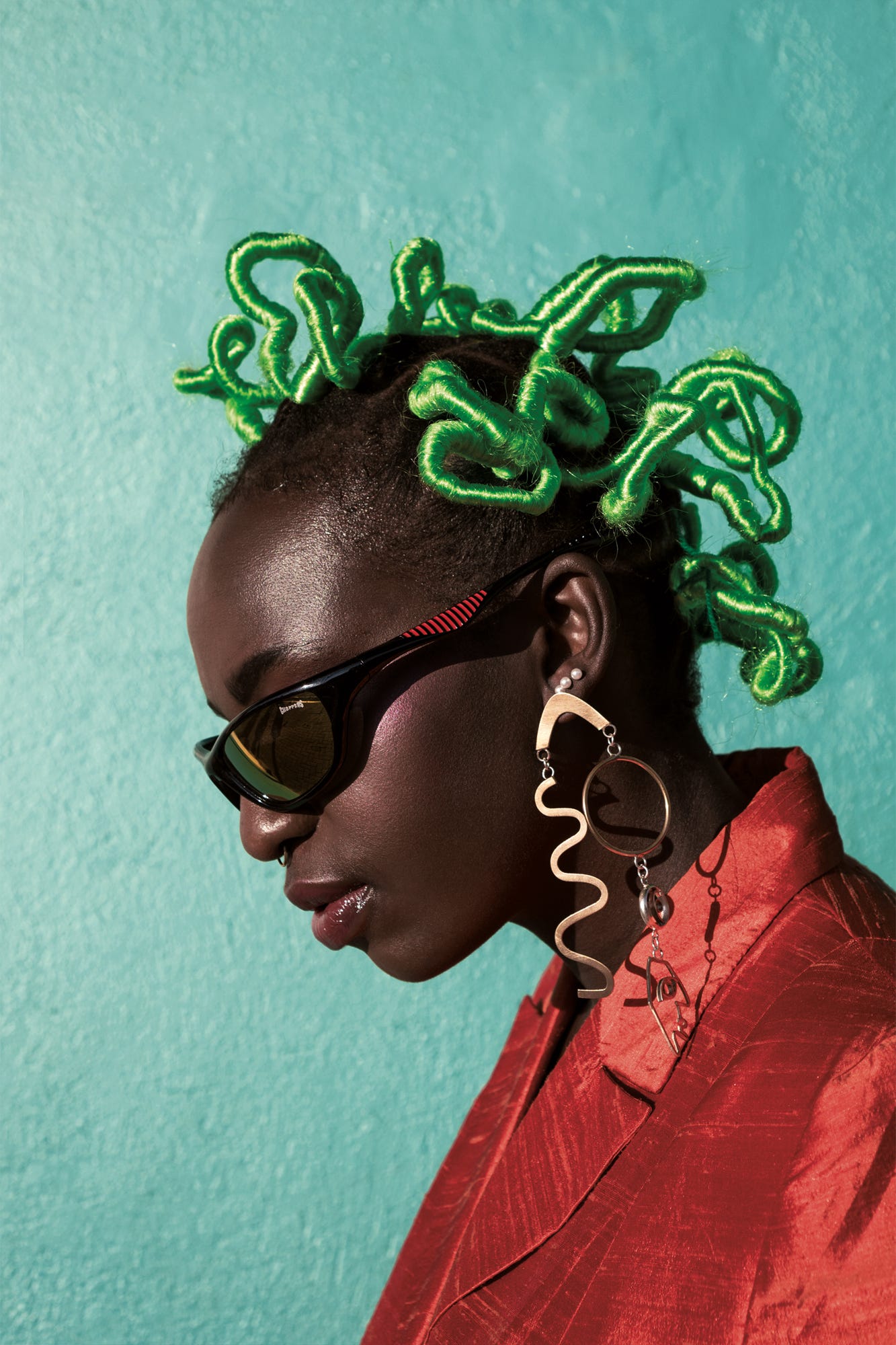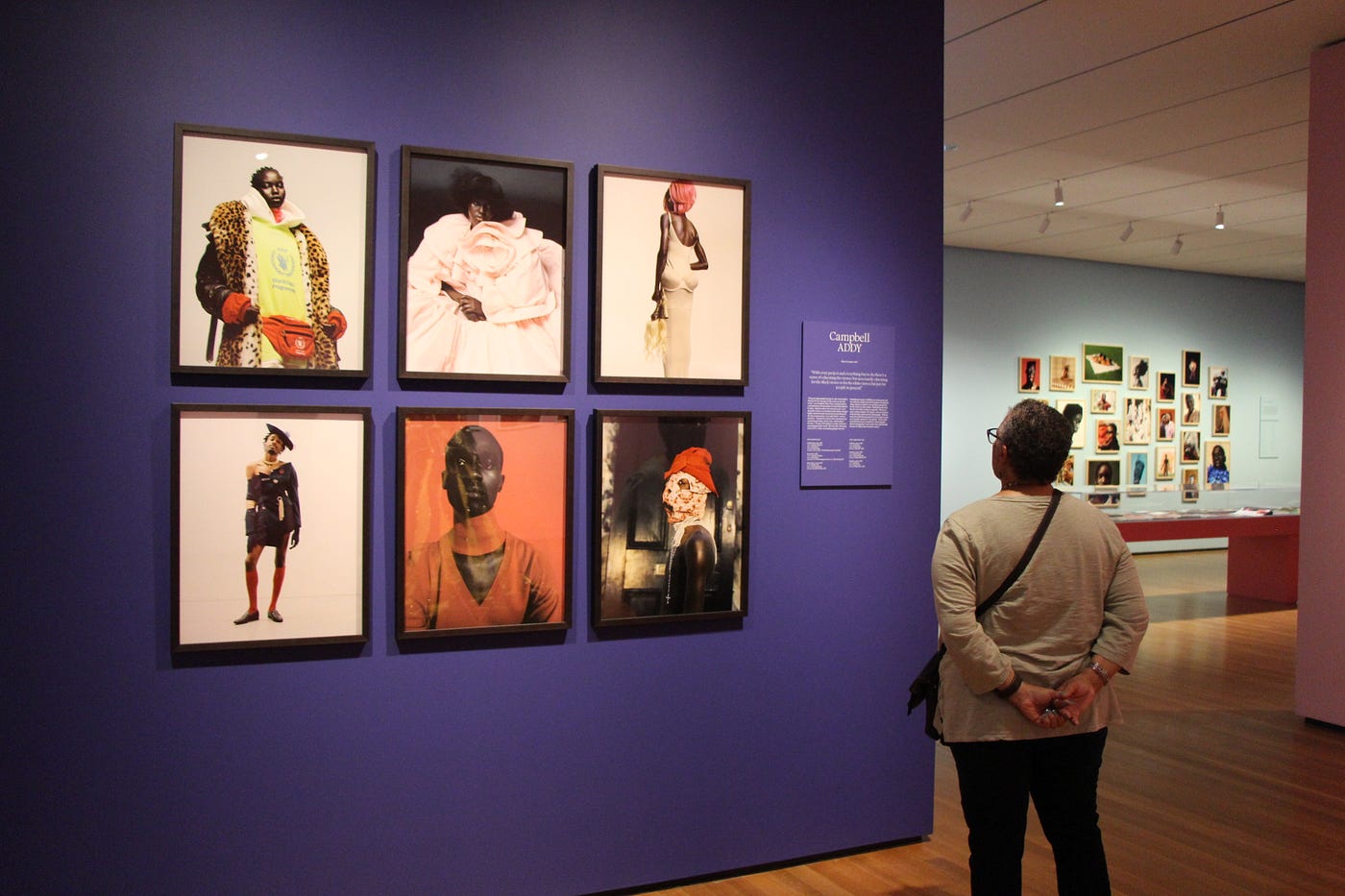[ad_1]
By Darnell-Jamal Lisby, CMA Assistant Curator

Fashion is an art form that has an uncanny ability to emotionally connect with us because of its high visuality. We absorb fashion virtually everywhere, from endless fashion shows on YouTube and the constant red-carpet awards season captured by television programs to the millions of social media accounts. One medium that remains a beacon of fashion consumption is photography. Fashion photography is most prominent on magazine covers and accompanying editorials where editors, stylists, and photographers collaborate on the inception of these images, influencing what audiences buy and how they consume fashion. We also see fashion photography prominently through advertisements, online and physically — for example, New York City’s and Los Angeles’s cityscapes are draped in fashion advertisements.

The photographs in The New Black Vanguard: Photography Between Art and Fashion, now on view at the Cleveland Museum of Art, speak to fashion and its presentation as a vehicle for combatting homogenous stereotypes around Black experiences across the world. There is an incredible array of artists chosen by the exhibition’s curator, Antwaun Sargent. Daniel Obasi, whose work is featured in i-D and Niijournal, and Quil Lemons, whose images are published in Vogue, Allure, and i-D, seek to center the vibrancy behind Black queer experiences, which are often an overlooked foundation of contemporary fashion. Visionaries like Cleveland-born Adrienne Raquel or Dana Scruggs showcase the dynamism of Black women, demonstrating the way they embrace sensuality as power and amplifying the idea that beauty lies in all skin tones.
Even though a photographer’s perspective is central to a fashion photograph, the stylist and model also bear significant responsibility for creation of the final image. The stylist has the task of making ensembles and sometimes serves as a creative director, shaping the narrative of the photograph. Stylists must balance the practicality of shooting clothing with the need to create a fantasy. A remarkable example of implementing this balance is seen in the late André Leon Talley’s creative direction of the 1996 Vanity Fair editorial “Scarlett ‘n the Hood.” This editorial represented something rare in fashion — uplifting beauty attached to Blackness. By styling Naomi Campbell in fashions designed by the creative directors of the leading Parisian houses, many of whom modeled as “servants” in the editorial, Talley subverted the historical social hierarchy, which usually broadly negates or lowers the place of Black identities and the broader community to the bottom of the fashion totem pole.

Building on Talley’s legacy, the artists represented in The New Black Vanguard use fashion to highlight a spectrum of Blackness that many non-Black people are usually not presented. For instance, two of the photographic portraits from Jamal Nxedlana’s 2019 Faka series center the Black queer perspective that is often invalidated within and outside Black communities. The figures in the photo, who present as male (but may personally identify differently) wear a full face of extravagant makeup, dazzling hoop earrings, and ruffled tops, presumably designed by Nxedlana, who is also a fashion designer. This depiction gives Black queer bodies permission to be authentically themselves. It celebrates this aspect of Black experience, one that the mainstream rarely uplifts due to historical, cultural, political, and religious influences that dictate societal traditions.

Shifting to the contribution of the models in a fashion photograph, they are the glue to the narratives. They not only have the task of bringing the visions of the stakeholders, stylists, and photographers to life, they must sometimes perform at highly athletic, even superhuman, levels. While most models remain in obscurity, sometimes specific celebrities, or models who rise to the level of celebrity, are chosen by the fashion industry to become fashion figures; the media often calls them fashion icons. For clarity, a fashion figure is an individual, often a celebrity, who is historically linked to influencing large swaths of audiences through their direct collaboration and connection with any facet of the fashion industry. Because the fashion industry is so immense, there are fashion figures who are connected not only to couture and “high fashion” but to all levels of fashion, from the streets of the Bronx to the Champs-Élysées. There have been countless fashion figures throughout history, from European royalty such as Marie Antoinette and Philip the Good to African American entertainers such as Josephine Baker and Queen Latifah.

urtesy of Aperture, New York, 2019. © Tyler Mitchell
One famous moment heralding a fashion figure is the 2018 Vogue September issue, starring Grammy Award–winning artist Beyoncé Knowles-Carter. A copy of this publication is on display in The New Black Vanguard. The September issue of most fashion magazines represents an industry reset: the time to promote what will be in style for the fall season. Because of its prestige, American Vogue’s September issue is deemed the annual fashion Bible; thus, gracing the September cover has remained a prestigious position. Vogue’s Editor in Chief, Anna Wintour, allowed Beyoncé complete creative control of every aspect of the shoot. Beyoncé chose 23-year-old Atlanta native Tyler Mitchell to collaborate and serve as photographer for the shoot, making him the first Black cover photographer in American Vogue’s history. Beyonce is one of the only Black women to grace a Vogue September issue, which she did twice. Coupled with Tyler’s milestone, this cover made double history.
The theme emanated an Afrofuturist essence, framing Beyoncé as a regal presence, especially apt since her nickname is “Queen Bey.” During this period in Beyonce’s career, she was creatively evolving, magnifying the way fashion symbolizes her social championship and exploration of her Blackness. Mitchell depicts Beyoncé in a very queenly way in his efforts to defy Black homogenous tropes. But it is through Beyoncé’s choice of fashion and her physical modeling of it that she illuminates the ongoing journey of using her artistry to understand her heritage — a combination that is often overlooked because in fine art, the photographer’s vision is often the primary focus. With Beyoncé’s Lemonade (2016) and Everything Is Love (2018) albums encouraging the Black community during those (and these) tumultuous times, it is fitting that the depiction of hope was the theme of the shoot. For Beyoncé, the fashion figure, and Mitchell, the photographer, this cover and the accompanying editorial signified that fashion is a tool for creating emotional synergy and uplifting the voices of the voiceless.

The 2018 Vogue September cover and editorial are among the many examples in The New Black Vanguard showing this generation of photographers claiming their power by capturing the essence of Black fashion figures/icons. From Nadine Ijewere’s The Year of Fenty for Allure, starring Rihanna, to Renell Medrano’s 2018 portrait of Slick Woods, the stories that emanate from the collaborations between fashion figures and photographers take on an influence that goes beyond the commercial realm. They incite unprecedented cultural, political, and social impact and make members of the Black community across the spectrum feel heard and seen. As presented in the 2018 Vogue September issue, Mitchell was not only a part of history being realized but also elicited what Beyoncé’s role as a fashion figure means today. For fashion figures like Beyoncé, fashion photography is a world where audiences are inspired to actively participate in change that pushes the world into a brighter, more equitable future.
Put these artworks in the context of the whole show when you visit the stunning exhibition The New Black Vanguard for yourself through September 11, 2022. FREE entry for members.
The exhibition is organized by Aperture, New York, and is curated by Antwaun Sargent.
The New Black Vanguard is made possible in part by Airbnb Magazine.
Major support is provided by PNC Bank. Generous support is provided by Donald F. and Anne T. Palmer.
All exhibitions at the Cleveland Museum of Art are underwritten by the CMA Fund for Exhibitions. Generous annual support is provided by an anonymous supporter, Dick Blum (deceased) and Harriet Warm, Dr. Ben H. and Julia Brouhard, Mr. and Mrs. Walter R. Chapman Jr., the Jeffery Wallace Ellis Trust in memory of Lloyd H. Ellis Jr., Leigh and Andy Fabens, Michael Frank in memory of Patricia Snyder, the Sam J. Frankino Foundation, Janice Hammond and Edward Hemmelgarn, Eva and Rudolf Linnebach, William S. and Margaret F. Lipscomb, Bill and Joyce Litzler, Tim O’Brien and Breck Platner, Anne H. Weil, the Womens Council of the Cleveland Museum of Art, and Claudia C. Woods and David A. Osage.
[ad_2]
Source link


:strip_icc()/BHG_PTSN19720-33d9cd22f6ab49e6a21982e451321898.jpg)

More Stories
Mapping Eastern Europe Website Launched
Kengo Kuma Designs a Dramatically Vaulted Cafe to Evoke Japan’s Sloping Tottori Sand Dunes — Colossal
Keeping The Artist Alive | Chris Locke | Episode 888